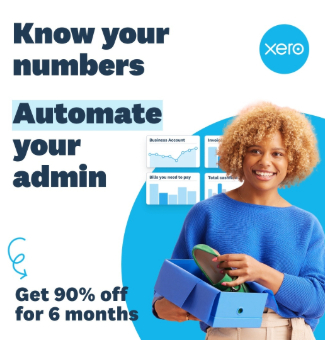Self Assessment is an HMRC system used by the self-employed and other individuals to calculate, report, and pay personal taxes and National Insurance contributions on earnings that are not taxed ‘at source’ through PAYE.
Most company directors and shareholders are required to register for Self Assessment and file personal tax returns with HMRC after the end of each tax year. Self Assessment registration, filings, and payments can all be carried out online.
Key takeaways
- Register for Self Assessment online using form SA1 if you’re a company director or shareholder with untaxed income.
- Submit your Self Assessment tax return by 31 January to avoid penalties, even if you owe no tax.
- Contact HMRC promptly if you can’t pay your tax bill to discuss possible payment options and avoid further issues.
Do I need to register for Self Assessment?
Those who are required to register for Self Assessment, file their own personal tax returns, and pay Income Tax and National Insurance contributions through Self Assessment include:
- company directors
- company shareholders
- self-employed individuals and sole traders earning more than £1,000 per year
- members of limited liability partnerships (LLPs), unless their income is salaried
- partners in a business partnership
- anyone who receives income from:
- land or property in the UK
- tips or commission
- dividends, investments, or savings
- non-UK sources
- anyone in receipt of Child Benefits who earns (or whose partner earns) over £60,000
- individuals who wish to claim certain Income Tax reliefs
- anyone who has to pay Capital Gains Tax
However, directors do not have to register for Self Assessment or file returns if all of their income is paid and taxed through PAYE (or similar). In such instances, they are essentially treated as employees for tax purposes. There is also no requirement for directors to register if they do not receive any taxable income at all.
Similarly, company shareholders (who may or may not also be directors), do not have to register for Self Assessment if all earnings are taxed at source and their annual dividends from shares are within the £500 dividend allowance.
In most limited companies, the directors and shareholders are the same people. This means that many such individuals receive both a director’s salary from the company and dividend payments from their shares. As a result, most directors and shareholders need to file personal tax returns on an annual basis.
How to register for Self Assessment
The way you register for Self Assessment depends on your circumstances. If you are a company director and/or shareholder, you are categorised as ‘not self-employed’ for Self Assessment purposes. This means that you need to register for Self Assessment using form SA1. You can do this online or by post.
To complete form SA1, you will be asked to provide the following information:
- full name
- home address
- National Insurance number
- Unique Taxpayer Reference (UTR), if previously registered for Self Assessment
- telephone number
- email address
- the date the income you received income from directorship
- the date you received any other untaxed income (e.g. dividends)
After you’ve registered, you’ll get a letter from HMRC within around 10 working days (or 21 if you are abroad). It will contain your UTR and information about your Self Assessment obligations, including filing personal tax returns and paying Income Tax and National Insurance contributions.
If you’re registering for Self Assessment for the first time, you’ll also have to create a new online account after registration and use your UTR to sign up for the Self Assessment online service.
Within 7 working days (or 21 if you are abroad) of signing up, you should receive an activation code in the post. You will need to use this to activate and sign in to your Self Assessment online account for the first time.
Completing and filing your Self Assessment tax return
You can use HMRC’s Self Assessment online service to complete and file personal tax returns every year. The information you will need to provide on your Self Assessment tax return (form SA100) includes:
- name and address
- date of birth
- phone number
- Unique Taxpayer Reference
- National Insurance number
- employer PAYE reference (if you receive a director’s salary, for example)
- details of income and capital gains, including interest, dividend payments from company shares, pensions and annuities, benefits, and any other taxable income
- tax reliefs and allowances, including registered pension schemes and Gift Aid
- tax adviser’s details, if applicable
You may also have to complete supplementary pages for some types of income. For example, if you receive a director’s salary through payroll, you must include form ‘SA102: Employment’ to record these taxed earnings on your tax return.
This enables HMRC to work out how much Income Tax and National Insurance you owe, as well as any reliefs and allowances you are entitled to, based on your total earnings from all taxed and untaxed sources.
Filing tax returns online is the quickest, easiest, and most secure option. You can also use the service to check and update your Self Assessment details, amend tax returns that you’ve already filed, view and download previous returns and tax calculations, and pay any Income Tax and National Insurance that you owe.
Alternatively, you can send Self Assessment tax returns on paper by downloading and completing form SA100.
Filing deadline for tax returns
Self Assessment filing deadlines are based on the tax year, which runs from 6 April in one year to 5 April the following year.
The deadline for filing online returns is 31 January after the end of the tax year in which the income is earned. Paper tax returns have an earlier filing deadline of 31 October after the end of the tax year.
For example, your tax return for the current 2025-2026 tax year must be filed by 31 October 2026 (paper return) or 31 January 2027 (online return). All of the income you receive between 6 April 2025 and 5 April 2026 must be included in this tax return.
Failure to meet the filing deadline will result in a £100 penalty, even if you don’t have any tax to pay. Further penalties will apply if you file your tax return three, six, and 12 months after the deadline.
Paying your Self Assessment tax bill
If you use the online service, your Self Assessment tax bill will be available to view as soon as you have completed your tax return. If you send a paper return, your tax bill will be sent to you in the post.
Payment deadline
The deadline for paying any Income Tax and National Insurance that you owe through Self Assessment is 31st January after the end of the tax year. This is the same as the filing deadline for online tax returns.
Payments on account
If your Self Assessment tax bill is more than £1,000, you will normally have to make advance payments toward your next tax bill. This is known as ‘payment on account’. The first payment on account will be due by 31 January when you pay the tax that you owe from the previous tax year. The second payment on account will be due by 31 July.
How to pay
HMRC provides a number of options for paying tax bills, including:
- Faster Payments via online or telephone banking or at your bank
- By debit/credit card through HMRC’s website
- CHAPs
- Bacs
- Direct Debit
- By cheque
- Through your PAYE tax code, if you have one
It is important to pay your tax bill by the deadline, otherwise, you will be charged interest and may also have to pay a penalty.
You may find it beneficial to set up a ‘budget payment plan’ to pay your tax bill in regular instalments throughout the year. This is a great way to effectively manage your finances and avoid having to set aside earnings or deal with a large bill at the end of January.
If you are unable to pay your tax bill
Should you find yourself in the unexpected position of being unable to pay your tax bill, it is important to contact HMRC as soon as you can, to explain the situation and discuss your options.
Self Assessment tax bills
If you have submitted your Self Assessment tax return and you owe less than £10,000, HMRC may allow you to pay your tax in instalments through the online service. Sign in to your HMRC online account to notify HMRC and find out what options are available to you.
If you have missed the payment deadline or you are unable to use HMRC’s online service, call the Self Assessment Payment Helpline on 0300 200 3822. Lines are open Monday to Friday, 8am to 4pm.
Other tax bills
If HMRC has sent you a payment request, such as a tax bill, or an official letter threatening legal action, you must contact HMRC using the details stated on the letter.
If you have not received a tax bill or letter from HMRC, you must call the Payment Support Service on 0300 200 3835. Lines are open Monday to Friday, 8am to 4pm
Information you will need to provide
When you contact HMRC about any tax payment problems, you will be asked to provide the following information:
- your Unique Taxpayer Reference (UTR) or VAT registration number
- the amount of the tax that you are struggling to pay
- why you are finding it difficult to pay
- any steps you have taken to try to pay the bill
- how much you are able to pay immediately
- how much time you think you’ll need to pay the rest of the tax you owe
- your bank account details
HMRC will ask you a number of other questions about your income and expenditure, any assets that you have (such as savings and investments), and what steps you are taking to deal with your tax payments.
HMRC will then decide if you should be paying the tax immediately, or whether it would be better to give you more time to get on top of your tax payments. In some cases, you may be asked to provide supporting documents or other evidence before a decision is made.
Please note that the information provided in this article is for general informational purposes only and does not constitute legal, tax, or professional advice. While our aim is that the content is accurate and up to date, it should not be relied upon as a substitute for tailored advice from qualified professionals. We strongly recommend that you seek independent legal and tax advice specific to your circumstances before acting on any information contained in this article. We accept no responsibility or liability for any loss or damage that may result from your reliance on the information provided in this article. Use of the information contained in this article is entirely at your own risk.














Join The Discussion